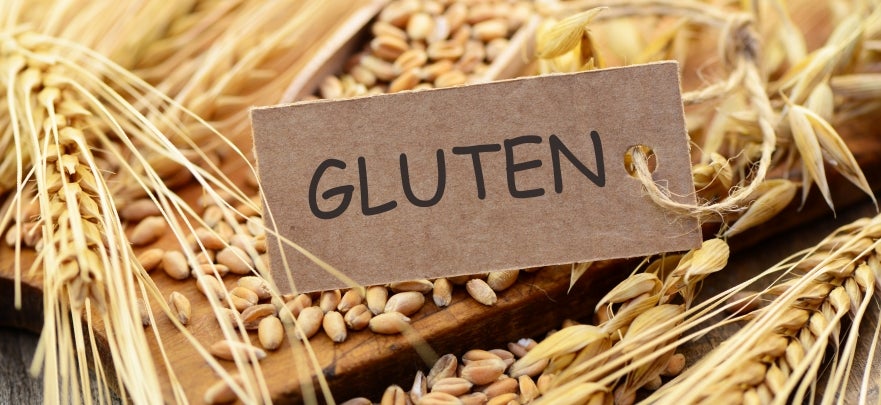Are You Really Gluten Free? The Hidden Sources of Gluten
Think you're going gluten free? You may be surprised to find out you are still getting exposed to gluten frequently! Whether you have celiac disease or any form of gluten sensitivity, you still may be experiencing symptoms despite eliminating gluten from your diet. Unfortunately, it’s very common to unknowingly consume gluten. Gluten hides in a wide range of food and many nonfood products as well. Identifying gluten in products can be tricky and time consuming, but certainly worth the effort. Simply reading the label is not enough. Depending on the product, regulations may or may not require labeling gluten. Consuming even minimal amounts of gluten from one of the hidden sources below can cause adverse effects. Here’s what you need to know:
What Is Gluten?
Gluten is a protein found in grass grains like wheat, rye, and barley. It is formed from two proteins: glutenin and gliadin. The term “gluten” is derived from the glue-like consistency that arises when this protein is mixed with water. If you’ve ever kneaded bread or stretched pizza dough then you’ve seen gluten in action. Grains such as wheat, rye, barley, malt, triticale, and spelt all contain gluten. Common foods made from these types of grains including pastas, breads, cereals, and beer.
The Top 8 Sources of Hidden Gluten
Starches
Wheat can be found in starches and starch derivatives. Read the ingredient label and look for terms like “wheat starch,” “hydrolyzed wheat starch,” or “contains wheat.” Wheat starch must have less than 20 ppm of wheat to be certified as gluten free. While the term “starch” in products generally refers to cornstarch, especially in FDA regulated foods, it can also mean wheat starch. There are some gluten-free starches, including tapioca starch, rice starch, and potato starch.
Sauces and Gravies
Sauces such as soy or teriyaki typically contain wheat protein, hydrolyzed wheat starch, or wheat flour; all of which mean gluten is present. Other sauces often contain soy sauce or malt vinegar. Additionally, the base of many cream sauces and gravies is a roux, which is flour mixed with butter. Get familiar with your favorite restaurants and products to ensure your sauces are all gluten free. If you don’t know, skip the sauce.
Brown Rice Syrup
Brown rice syrup is a sweetener created by fermenting brown rice with enzymes, which break down starch to sugar. While the enzymes can be derived from fungi, they are typically from barley. This prevents the product from being gluten free. Brown rice syrup is often used as an ingredient in multi-ingredient products like energy bars and cookies. Some companies that use cereal enzymes will list “barley” or “barley malt” in their ingredients. It may be difficult to verify gluten-free status in mainstream products that contain brown rice syrup as a sub-ingredient.
Soups
Companies often use wheat flour or wheat starch as a thickener for soups, which can get lost in the ingredient label. Many soups also contain barley or other grains. Read labels carefully, as prepackaged and canned soups along with soup bases and bouillons usually contain gluten, especially those that are cream based.
Salad Dressings
Dressings can contain wheat flour, soy, or malt vinegar. Many of your standard salad dressings contain wheat or gluten-containing additives like modified food starch as a thickener. Additionally, salad dressings often contain artificial colors, flavorings, dextrin, malt, soy sauce, and flours that can contain gluten as a sub-ingredient. Even if the label states “wheat free,” you will want to make sure there are no other gluten-containing ingredients hidden in the product.
Chips and Fries
Potatoes are gluten-free. However, malt vinegar and wheat starch are often used to make potato chips. These seasonings contain gluten. Additionally, french fries are often fried in the same oil that is used to make other gluten-containing fried foods leading to cross-contamination.
Processed Meats
Processed meats such as hamburger patties, meatballs, meatloaf, sausages, and even deli meats can contain gluten. Wheat-based fillers are often used in processed meats to either bind meat or improve texture. Seasoned or marinated meats often contain hydrolyzed wheat protein or soy sauce, and bread crumbs are added to bulk up products
Medications and Vitamins
Labeling standards for gluten in medications are just developing. Many prescription and over-the-counter medications contain binders that can contain gluten yet gluten is not always identified. In general, generic versions are more likely to contain gluten. Always verify with a pharmacist if the medication or its label looks different than what you’re accustomed to. You can also ask the pharmacist or manufacturer to confirm that the medication is gluten free.
Makeup/Cosmetics and Beauty products.
Although you’re not actually eating cosmetics, even a small amount of gluten in a lip balm could cause a problem. In beauty products, hydrolyzed gluten is used to make emulsifiers and stabilizers. This is an area of research that requires further exploration, but people with celiac disease who want to live a gluten-free lifestyle should be aware of the ingredients in their cosmetics.
Bottom line is if you are sensitive to gluten in any way, it’s important to know gluten can be hiding in many unlikely places. Always check your nutrition and product labels to ensure you won’t be exposed. If you still are not positive, you can contact the product manufacturer for a detailed ingredient list.






